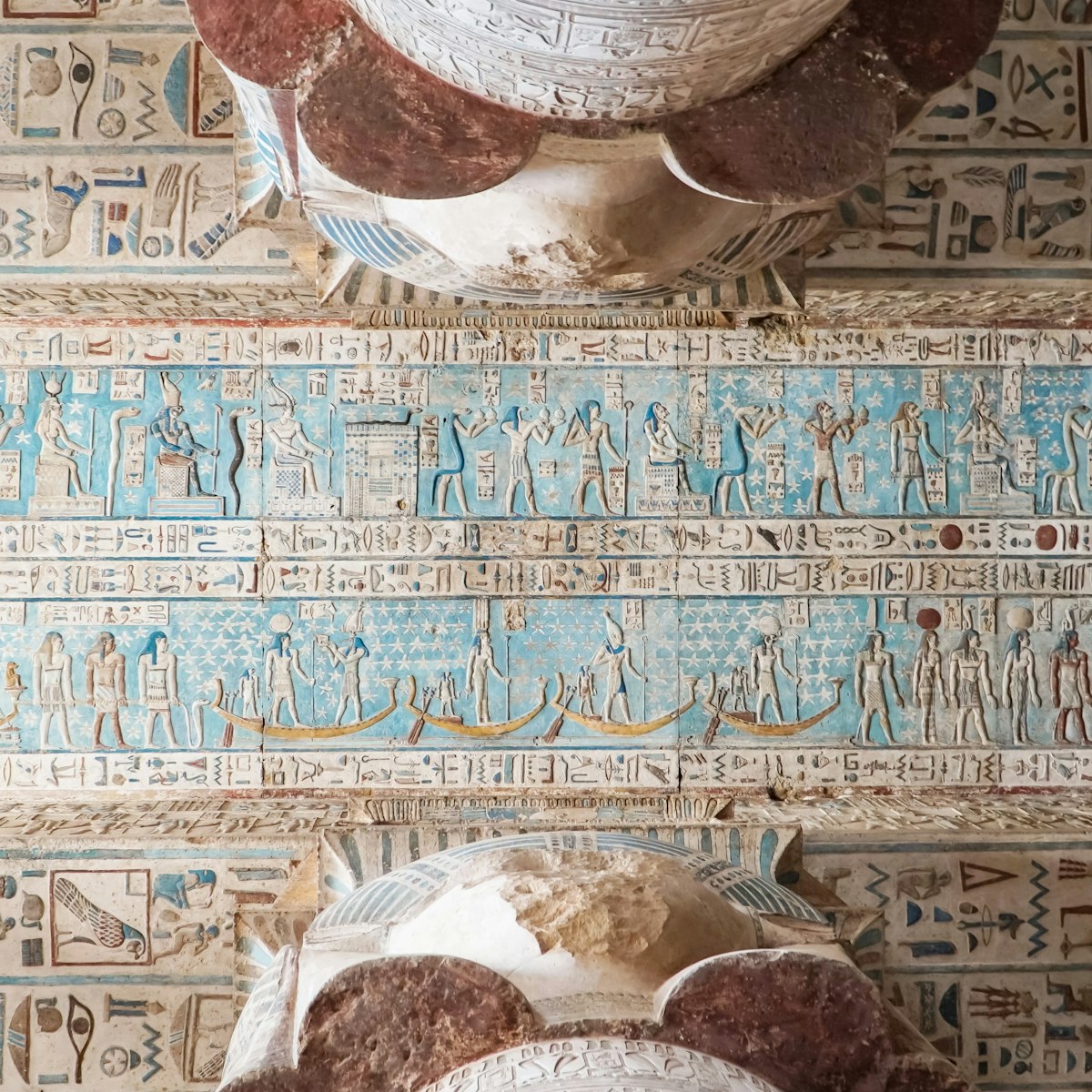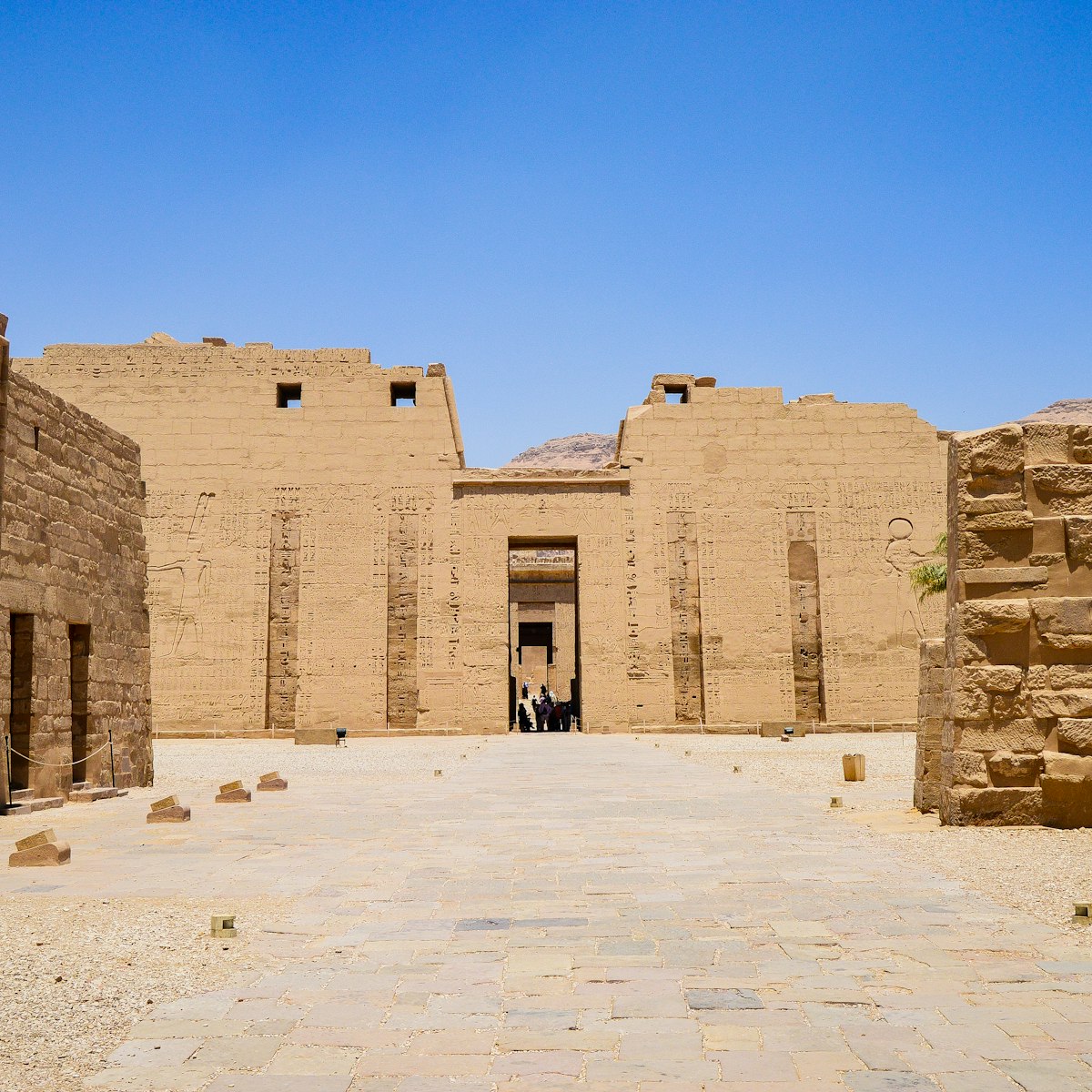Tawosret was the wife of Seti II and after his successor Siptah died, she took power herself (1188–1186 BC). Egyptologists think she began the tomb for herself and Seti II, but their burials were removed by her successor, the equally short-lived Sethnakht (1186–1184 BC), who added a second burial chamber for himself. The tomb has been open since antiquity and some decoration has deteriorated.
The change of ownership can be seen in the tomb’s decoration; the upper corridors show the queen, accompanied by her stepson Siptah, in the presence of the gods. Siptah’s cartouche was later replaced by Seti II’s. But in the lower corridors and burial chambers, images of Tawosret have been plastered over by images or cartouches of Sethnakht. The colour and state of the burial chambers remains good, with astronomical ceiling decorations and images of Tawosret and Sethnakht with the gods. The final scene from the Book of Caverns adorning Tawosret’s burial chamber is particularly impressive, showing the sun god as a ram-headed figure stretching out his wings to emerge from the darkness of the underworld.







